West Virginia saw an unprecedented drop in the incarcerated population at the onset of the COVID-19 pandemic. Between the beginning of March 2020 and April 15, 2020, the state’s total incarcerated population fell by nearly 13 percent as officials made efforts to prevent COVID-19 spread in jails and prisons. While the number of incarcerated people has been increasing since the start of 2021, the current total is still lower than this time last year.
However, looking only at the total incarcerated population obscures the different scenarios in West Virginia’s regional jails and prisons, and thus, the varying risks of COVID-19 exposure among incarcerated individuals. West Virginia’s prisons have remained under capacity due to a slowdown in transfers from the regional jails. While this may reduce the risk of COVID-19 exposure in prisons, it puts people in jails at an elevated risk. In addition, the overcrowding in regional jails could increase the likelihood of other harms, such as physical violence.
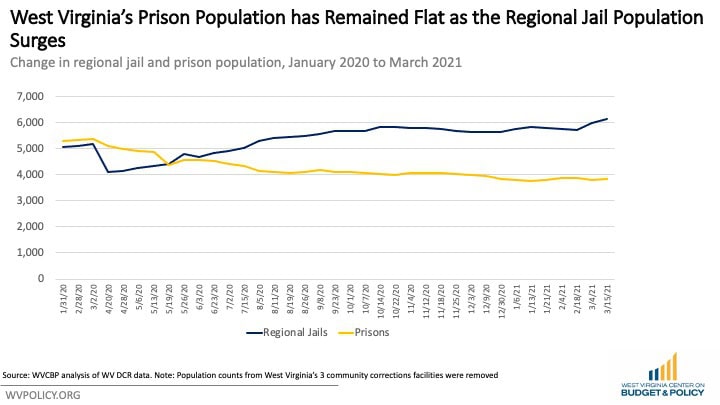
Prison populations declined slowly in 2020. Between March 2, 2020 and April 20, 2020, the number of people incarcerated in prisons in West Virginia declined by only 251, just 4.7 percent of the pre-pandemic prison population. It wasn’t until July — four months after Governor Jim Justice declared a state of emergency — that the prison population fell by 1,000 below pre-pandemic levels and remained below that number. At 3,831 people, the prison population on March 15, 2021 was at its lowest since 2003.
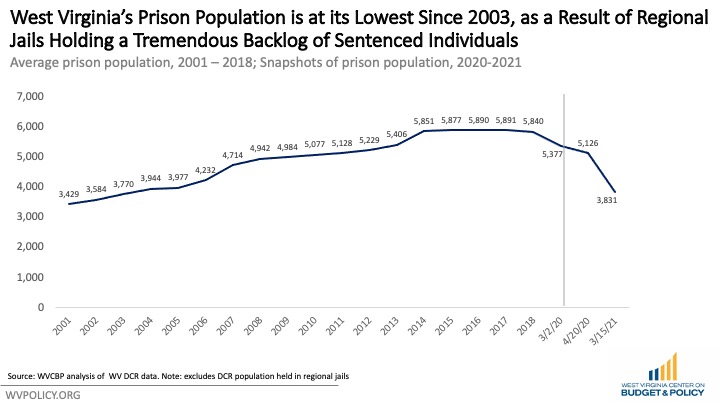
While prisons have remained under capacity since the start of the pandemic, regional jails only experienced a brief, drastic reduction in population. Between March 2 and April 20 of 2020, West Virginia’s regional jail population decreased by more than 1,000 people, or 21 percent. Since then, the jail population has risen to 6,135 people on March 15, 2021, or 144 percent of the maximum capacity of 4,265.
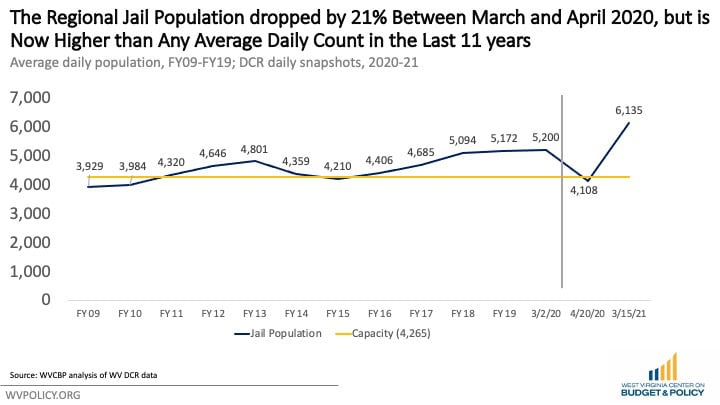
As the COVID-19 pandemic subsides, the protocols that kept the prison population low will end, and it’s likely that we will see prisons return to their maximum-rated capacity. What’s more, regional jails will still remain overfilled, primarily holding people who are being detained pretrial or are part of the prison backlog.
Evidence is clear that correctional facilities are at a heightened risk of COVID-19 outbreaks. National data indicates that people incarcerated in prisons have contracted the virus at a rate four times higher than that of the general population. At least 4,000 incarcerated people and staff in West Virginia have contracted COVID-19 since March 2020, but the actual number is likely even higher. Although West Virginia did conduct widespread testing when an outbreak was expected in a jail or prison, the state never engaged in a continuous mass testing program for incarcerated people.
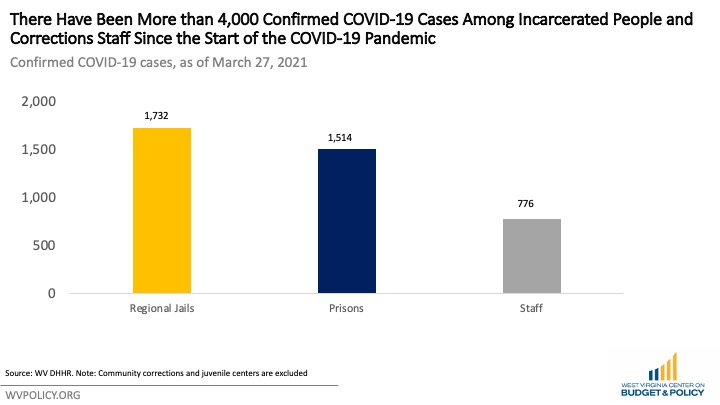
At least 10 incarcerated people and two corrections staff in West Virginia have died from COVID-19 in the last year. The Division of Corrections and Rehabilitation (DCR) is awaiting further info for 11 additional incarcerated people to determine whether or not COVID-19 was a factor in their deaths.
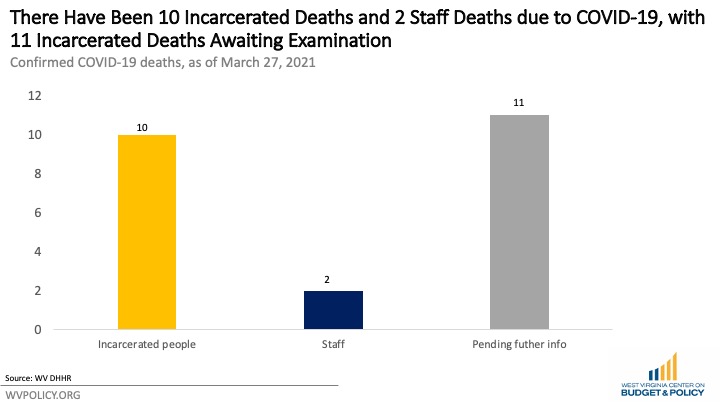
Recognizing that prisons and jails pose a unique threat for COVID-19 transmission, other states have been vaccinating incarcerated people or have at least included this population in their plans. West Virginia has not yet done so, leading the ACLU-WV and Mountain State Justice to declare their intent to file a lawsuit against the state unless a plan to prioritize COVID-19 vaccinations for incarcerated people is released by March 31, 2021.
While the total number of incarcerated people in West Virginia is lower than it was at the beginning of March 2020, the number has been trending upward. As courts begin to clear their dockets and life regains some pre-pandemic normalcy, it is likely that the incarcerated population will continue to increase unless stakeholders make intentional efforts to keep people out of jail and prison.
At the local level, police should be given more latitude to issue citations in lieu of arrests when possible, which would free up officer time and keep people out of jail, where even one to three days could be a traumatic experience. Parole and probation officers should focus less on technical violations for people under community supervision, which make up approximately 22 percent of prison admissions in West Virginia.
The state should also prioritize releasing people from prison who are there only because they are lacking home plans or required courses, something two recent pieces of legislation, HB 3304 and HB 3078 aim to achieve. What isn’t needed is legislation that will increase incarceration in West Virginia, such as HB 2017. As legislators and county officials debate state and local budgets, the burden of regional jails and prisons remains largely out of the discussion, even though West Virginia spends nearly 400 percent more per capita on corrections now than 40 years ago.